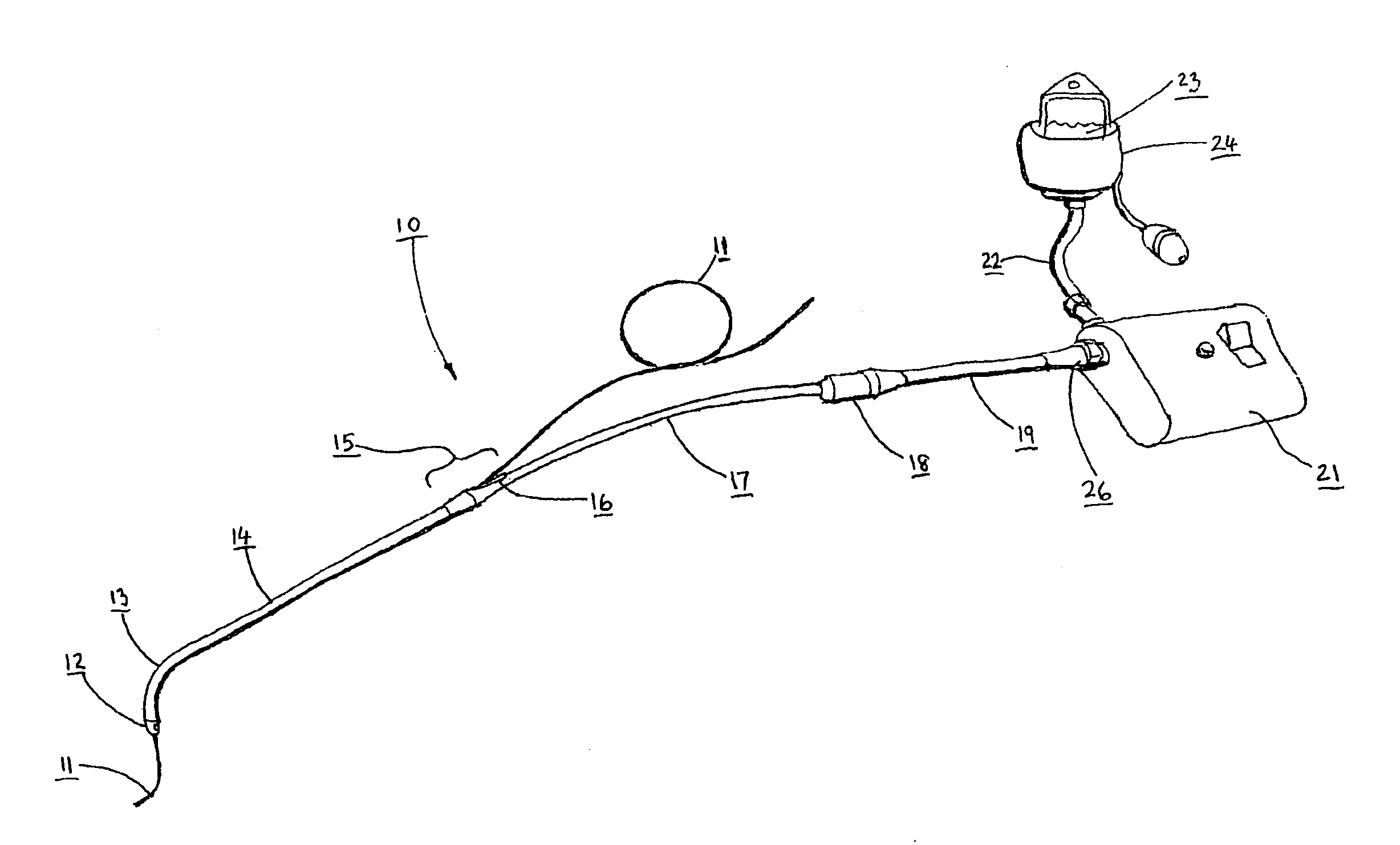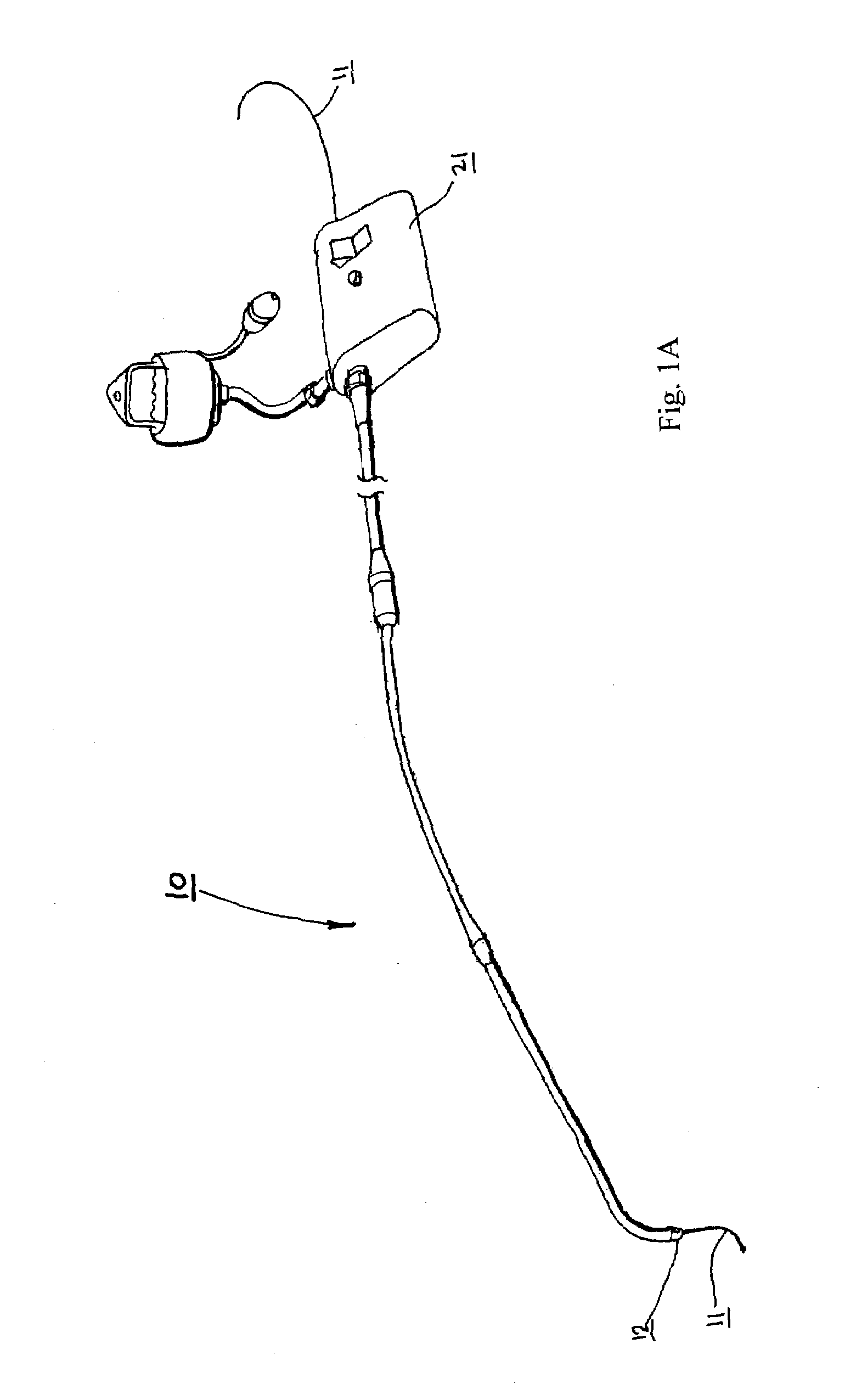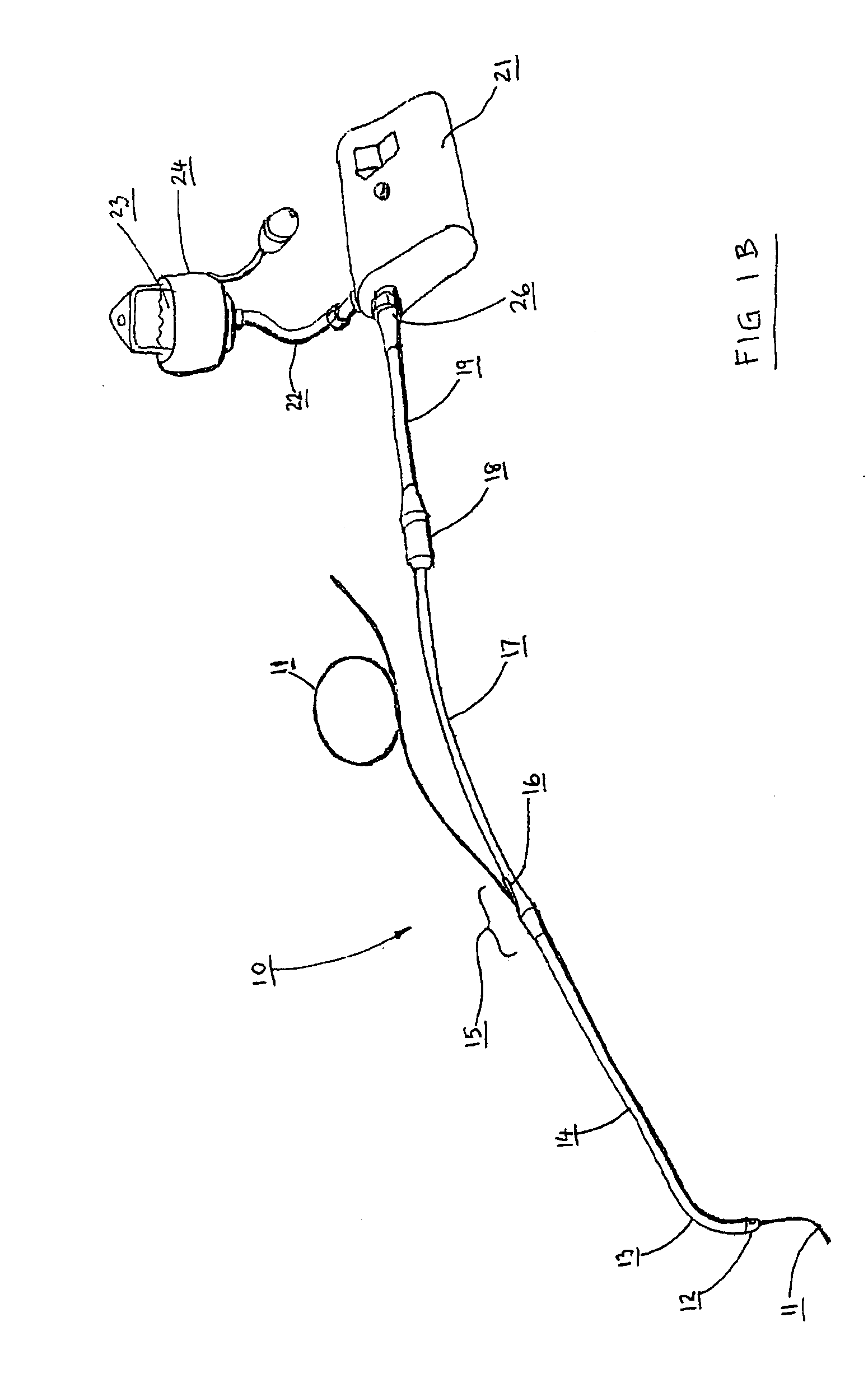Catheter for conducting a procedure within a lumen, duct or organ of a living being
a technology for living beings and catheters, applied in catheters, medical science, surgery, etc., can solve the problems of rotary devices, need to pass the entire rotary drive over a guidewire, and slow method a) to achieve the effect of facilitating the operation of the procedur
- Summary
- Abstract
- Description
- Claims
- Application Information
AI Technical Summary
Benefits of technology
Problems solved by technology
Method used
Image
Examples
Embodiment Construction
[0039]FIG. 1A and FIG. 1B illustrates a device (10) having a rotating working element, typically in the form of a tissue penetrating member at its distal end, shown here as rotating tip (12), suitable for opening totally occluded vessels. It is recognized that the working element may also provide other functions, such as that of a rotating scanning element, which provides detailed information via a detection system, for example through the use of ultrasound, or optical coherence reflectometry to generate information about the surrounding tissue. The difference between the devices depicted in FIG. 1A and FIG. 1B is in the manner the device slides over the guidewire (11), consequently the description provided will generally refer to FIG. 1B as the preferred arrangement of this invention, however it will be largely applicable to the device shown in FIG. 1A as well.
[0040]In FIG. 1A the device is utilized in an over the wire manner, with a guidewire that enters at the tip (12) and exits ...
PUM
 Login to View More
Login to View More Abstract
Description
Claims
Application Information
 Login to View More
Login to View More - R&D
- Intellectual Property
- Life Sciences
- Materials
- Tech Scout
- Unparalleled Data Quality
- Higher Quality Content
- 60% Fewer Hallucinations
Browse by: Latest US Patents, China's latest patents, Technical Efficacy Thesaurus, Application Domain, Technology Topic, Popular Technical Reports.
© 2025 PatSnap. All rights reserved.Legal|Privacy policy|Modern Slavery Act Transparency Statement|Sitemap|About US| Contact US: help@patsnap.com



